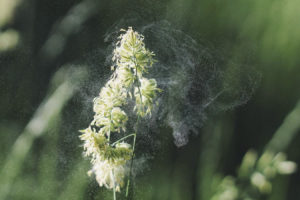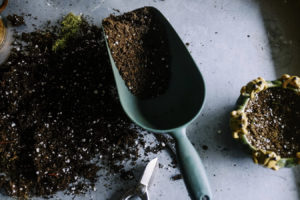Whether you’re a veteran gardener or a first time grower, selecting the right nutrients to grow cannabis can be a bit confusing with the variety of options available. This can easily be combated with some research on the topic and to understand what the plant needs to thrive as well as how they absorb and utilize crucial nutrients. Once you have this knowledge base, it will help you to select the best quality products without blowing your budget.
The Chemistry of Cannabis- Which Elements does it need?
There’s a unique composition of elements your cannabis plant wants and needs in order to fleurish to its full potential.This main group of elements are referred to as macronutrients. Below is a breakdown of required mineral and non-mineral elements your plant needs.
Mineral Nutrients absorbed from the Soil :
- Calcium (Ca)
- Magnesium (Mg)
- Phosphorus (P)
- Potassium (K)
- Nitrogen (N)
- Sulfur (S)
Calcium
Calcium’s role is to keep the composition and structure of the cell walls of a plant in tact. In the absence of calcium,new growth becomes less prevalent, sometimes stunted. A lack of this nutrient can also leave small rust-coloured spots and the leaves will tend to curl.
Magnesium
Magnesium enables the plants to generate glucose from photosynthesis. So without this element, no energy can be converted from the sun. It assists in metabolizing the glucose present to make it available for the growth cycle. Lack of this element can often result in yellowing leaves and discoloured veins.
Phosphorus
Phosphorus plays a key role. It’s primary function is to assist in making the nutrients available to the plant and is important to grow robust, healthy buds. It then uses those nutrients to build the structure of the plant. In its absence, a purple hue is often observed in the veins of the leaves and plants tend to have underdeveloped root systems and some may not flower at all.
Potassium
Potassium is heavy hitter and has a number of jobs. It assists in regulating the systems of the plant on its path to healthy growth. It plays an important role in the passive regulation of water and salt concentrations in the plant which occurs through osmoregulation. Potassium also regulates the exchange of the C02, H20 and oxygen through the stomata of the plant.
Potassium works to store energy from photosynthesis into glucose, which is then converted and used as energy as the plant grows. Insufficient potassium levels can result in very weak plants that almost appear burnt as they are unable to regulate the exchange of elements.
Nitrogen
Nitrogen comes into play the most during the vegitative stage of the plants life. It is responsible primarily for development and allows the cells to control their use of energy. Without it, the plant is unable to convert sunlight into energy, rendering it incapable of growth. An essential ingredient in DNA or RNA is a nucleic acid, which Nitrogen creates and allows for growth and multiplication of cells.
Hydroponic Cannabis Nutrients (no soil)
Many indoor cannabis growers are growing hydroponically. This is the practice of growing plants without the presence of soil. Soil substitutions can range from rockwool or clay pebbles or some sort of mix. The majority of nutrients sold for cannabis cultivation are hydroponic nutrients as this is the present demand.They are available in liquid form and sometimes a concentrated powder to be diluted in water.
Different nutrients are required to control different facets of the plant’s growth cycle. Some products are classified between “grow” and “bloom”. Grow solutions containing high nitrogen content for maximum vegitative growth, and bloom solutions containing high phosphorus content for maximum flower output.
One should take precautions when first experimenting with hydroponic nutrients as this is not recommended for the beginner. Overfeeding can lead to plant damage which could result in your plant potentially dying. General practice is to start low and slow and monitor the results. According to the labelling, start with 25% of the recommendation of the product and work your way up.
Organics and “Soil food” for Cannabis
The differentiation between soil and hydroponic is the composition of organic matter within such as compost, manure or worm casings containing a plethora of micronutrients all to be absorbed by the plant. Many of these nutrients are in a non-soluble form and are to be processed by fungi and other microbes in order to be absorbed. Non-organic nutrients are less popular in the grow community as they can build up in the soil harming it’s lifespan and preventing the absorption of water and nutrients by the roots.
Organic fertilizers can be a bit more user friendly for first time growers. Recommendations in order to not completely blow your budget, are to use items such as fish meal for nitrogen, or bat guano for phosphorus, epsom salts for magnesium and sulfur as well as wood ash for potassium. You can purchase these items separately or there are also commercially available soil blends that contain the proper composition of these ingredients taking out the “guesswork” for growers. These can be on the more expensive side, albeit you can simply follow the manufacturer’s feeding schedule to obtain optimal results and yield. All readily available at your local hardware store.
At the end of the day, there are many ways one can grow cannabis. Hydroponics can provide a bigger yield and faster bud production but requires much knowledge and attention to be successful. While organic soil can produce a smaller yield and slower growth process, but is the easier way to go for a beginner trying to learn the ropes.. Rule of thumb is to do your research prior to starting your cannabis grow operation to figure out what is the best option for you, and this will save you wasted money and likely time, which is of essence. Good luck!




